Inside the home of Denver’s most important mid-century-loving couple
As originally featured in the September 2010 issue of Wallpaper* (W*138)
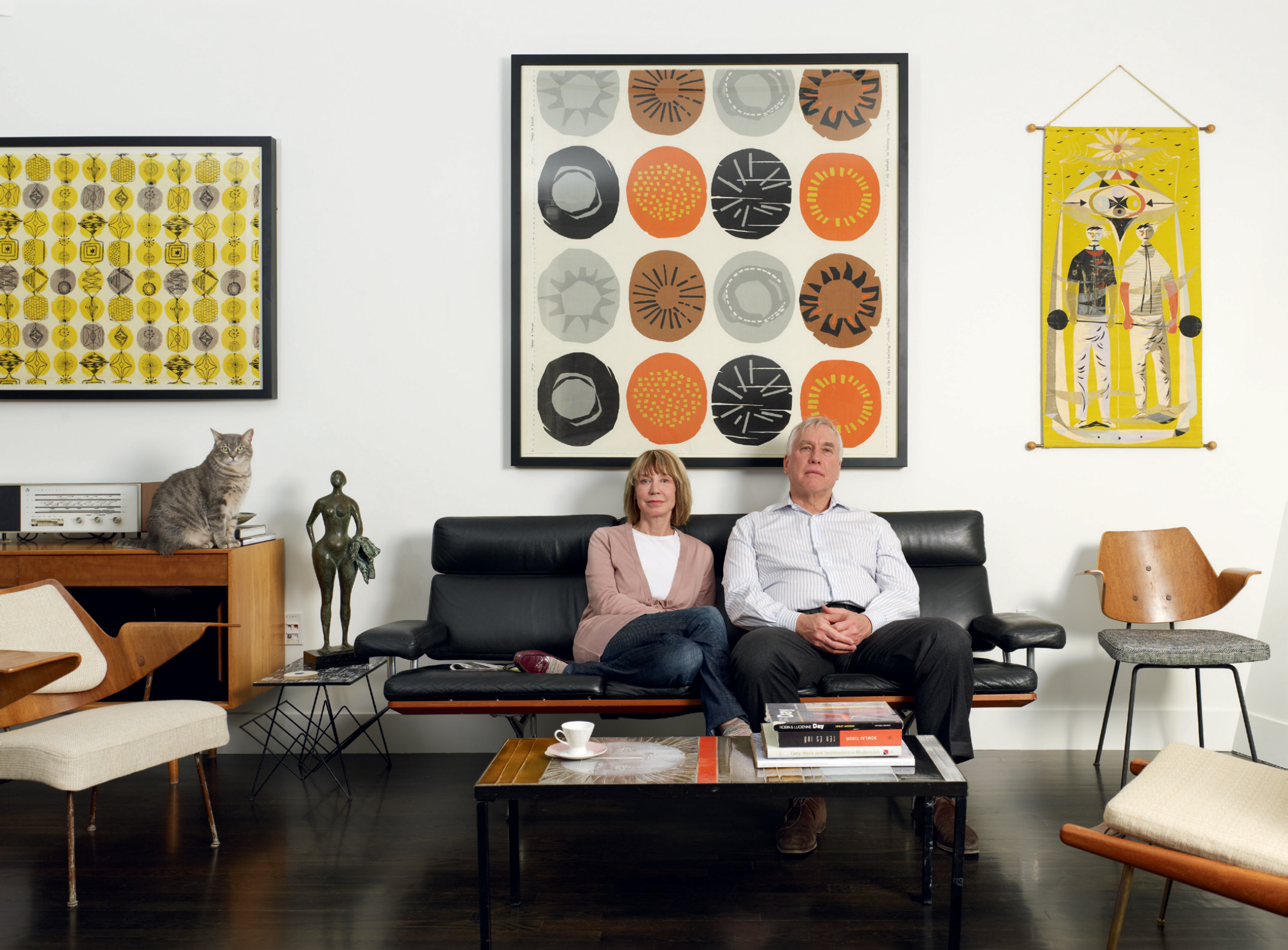
It’s something of a surprise to learn that the biggest collection of work by British modernists Robin and Lucienne Day is owned by Americans. Surprising, because the Days never achieved the worldwide recognition that Charles and Ray Eames (to whom they are often compared) did. Even among Britons, they have a cult following rather than mainstream appeal. So why is it that so much of their work has ended up Stateside?
It’s down to Colorado couple H Kirk Brown III and his wife Jill A Wiltse, who began collecting Robin’s furniture and Lucienne’s textiles (128 pieces and counting) in 2003. ‘I first came across the Days in 1997 in a catalogue published by London’s Fine Art Society and Target Gallery,’ says Brown. ‘I fell in love with British modernism and began building a collection with the aid of both galleries.’ Wiltse, an entrepreneur like her husband (she set up a poop-a-scoop business, he owns oil wells), majored in fine art. When they married, their passion for collecting took off. Today they own more pieces by the Days than London’s V&A museum does. Annamarie Stapleton, a director at the Fine Art Society, says ‘Nobody has such a depth and breadth of material and in such good condition as Kirk and Jill.’
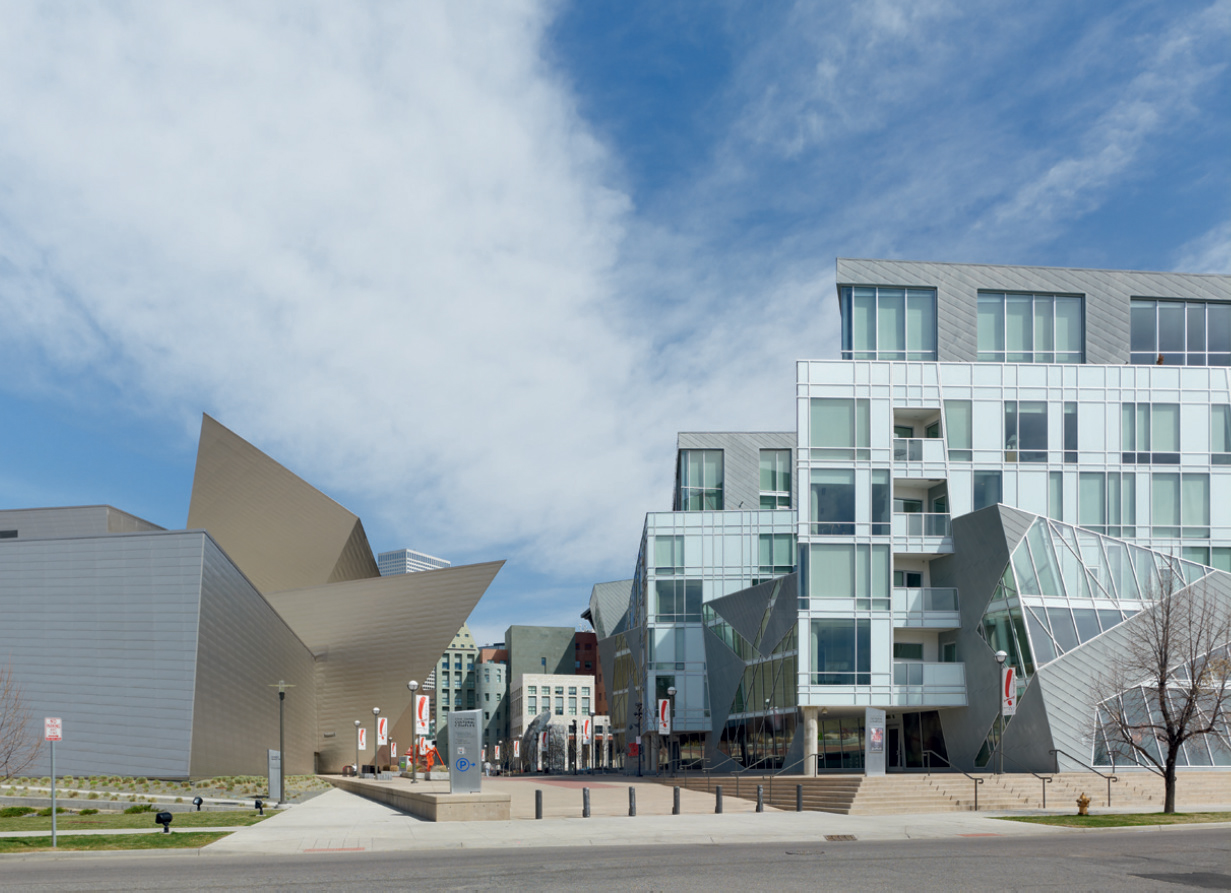
The couple’s apartment is in a block next to the new extension of the Denver Art Museum, both by Daniel Libeskind. Photography: Joe Fletcher
When, in 2006, the couple snapped up an apartment in a new block adjacent to the Denver Art Museum extension, both of which were designed by Daniel Libeskind, they realised they had found the perfect home for part of their vast collection. Their retro textiles, Bauhaus furniture and mid-century tableware sit comfortably in Libeskind’s challenging spaces, and the couple rotate them regularly. The contents of the apartment read like a Who’s Who of the best designers of the 1960s: the Eameses, Ernest Race, Roger Capron and Herbert Bayer. The pieces were bought at auctions or through galleries, and the couple talk like biographers when they speak about the designers they collect.
In Alice in Wonderland fashion, you can walk through the 1960s-inspired interior into the apartment next door, which they also own and have filled with Hungarian art from 1890-1956. ‘Kirk has always had the collector’s instinct,’ says Wiltse. ‘When I first met him, I found all these stickers inside cupboard doors, peeled off the fruits he had bought at New York’s Greek market.’ Brown interjects: ‘I had, at the time, also started collecting prints by Robert Motherwell and posters by artists involved in Roosevelt’s post-war Federal Arts Projects.’
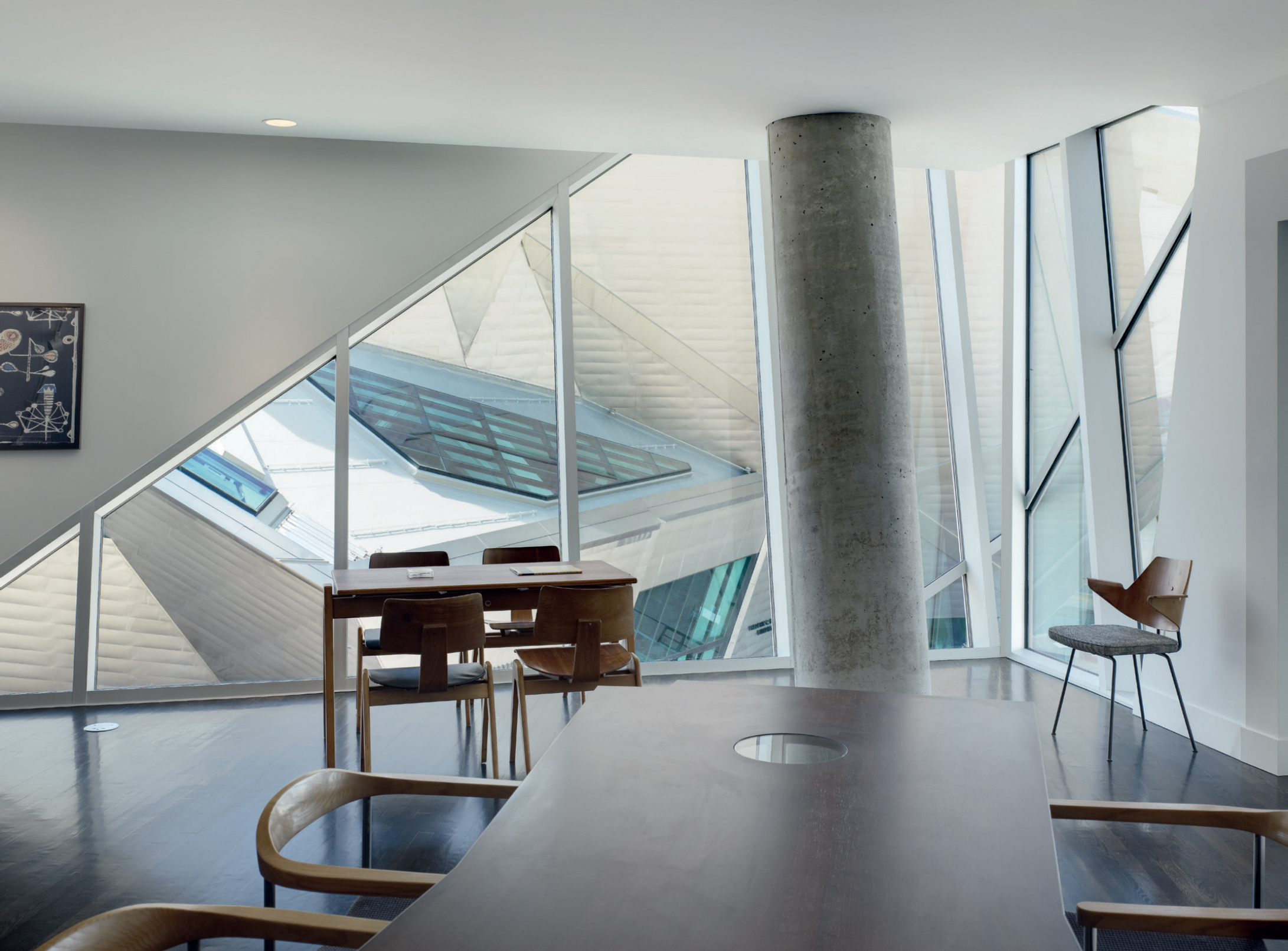
The dining room features a framed print of Lucienne Day’s ‘Small Hours’, a Robin Day table and chairs, and a bespoke table (foreground) by Brown and Wiltse’s friend Michael McCoy. Photography: Joe Fletcher
Unlike many collectors, who prefer to operate in the shadows, Brown and Wiltse actively seek to put as much of their collection before the public as possible, while living with it on a day-to-day basis. When not on display, works are stored in one of their 14 climate-controlled storage units in Denver that total 3,000 sq ft. ‘These are already full. We need to get some more,’ says Brown. One day, they hope to bring all their treasures under one roof and open a gallery in the huge modernist house they also own in Denver.
We meet at the Textile Museum in Washington DC, for the opening of ‘Art by the Yard – Women Design Mid-Century Britain’, a show that only happened because of their efforts and which features works by Jacqueline Groag, Marion Mahler and Lucienne Day, all loaned from their collection. In their orbit are dealers and curators, architects, academics and film directors; all praise their enthusiasm and approachability. As their collection grows, so does their presence on various boards, such as those of the Museum of California Design and the American Hungarian Foundation.
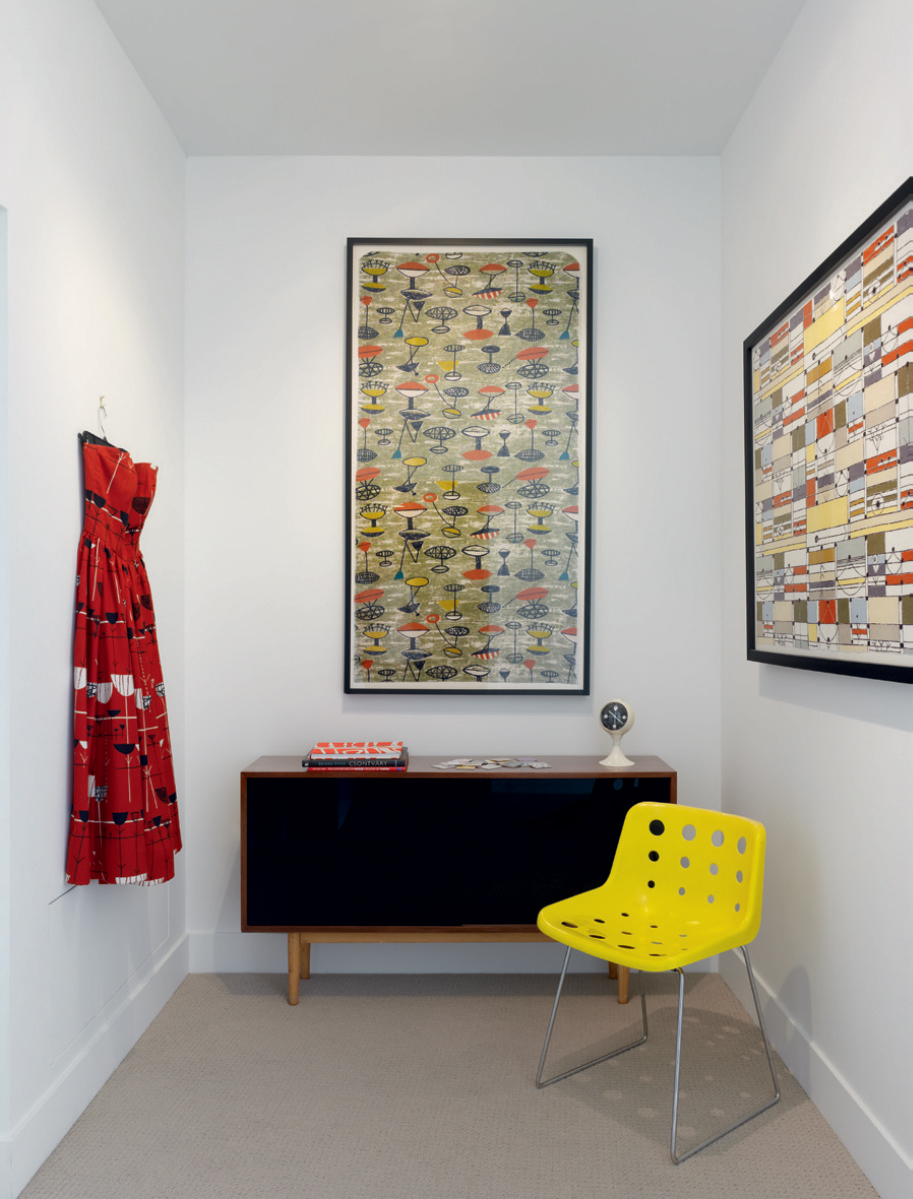
From left, Wiltse’s 1950s-style wedding dress, made from Lucienne Day’s ‘Calyx’ fabric; ‘Flotilla’ print by Lucienne Day; a console by Robin Day; and a print by Jacqueline Groag. Photography: Joe Fletcher
Like all design party faithfuls, they attend Palm Springs’ Modernism Week. It was there, two years ago, that they had an epiphany. ‘Many of the architects and designers involved are getting on in years and we thought that we might want to memorialise them on film while they are still alive,’ says Wiltse. So they set up Design Onscreen, a production company that makes documentaries on the design world’s great and good. So far, they have funded films on US architects William Krisel and Donald Wexler, and Dutch designer Hella Jongerius.
‘We hope to build a portfolio of films and approach foundations for fundraising,’ says Brown, who at present pays for all Design Onscreen’s productions. ‘There are 90 names on our films-to-be-made list,’ adds Wiltse. Meanwhile, interest in the Days’ work is likely to rise even further this year, thanks largely to Brown and Wiltse, who are lending their collection to an exhibition that will tour the UK.
INFORMATION
Receive our daily digest of inspiration, escapism and design stories from around the world direct to your inbox.
Emma O'Kelly is a freelance journalist and author based in London. Her books include Sauna: The Power of Deep Heat and she is currently working on a UK guide to wild saunas, due to be published in 2025.
-
 For Rodríguez + De Mitri, a budding Cuernavaca architecture practice, design is 'conversation’
For Rodríguez + De Mitri, a budding Cuernavaca architecture practice, design is 'conversation’Rodríguez + De Mitri stands for architecture that should be measured, intentional and attentive – allowing both the environment and its inhabitants to breathe
-
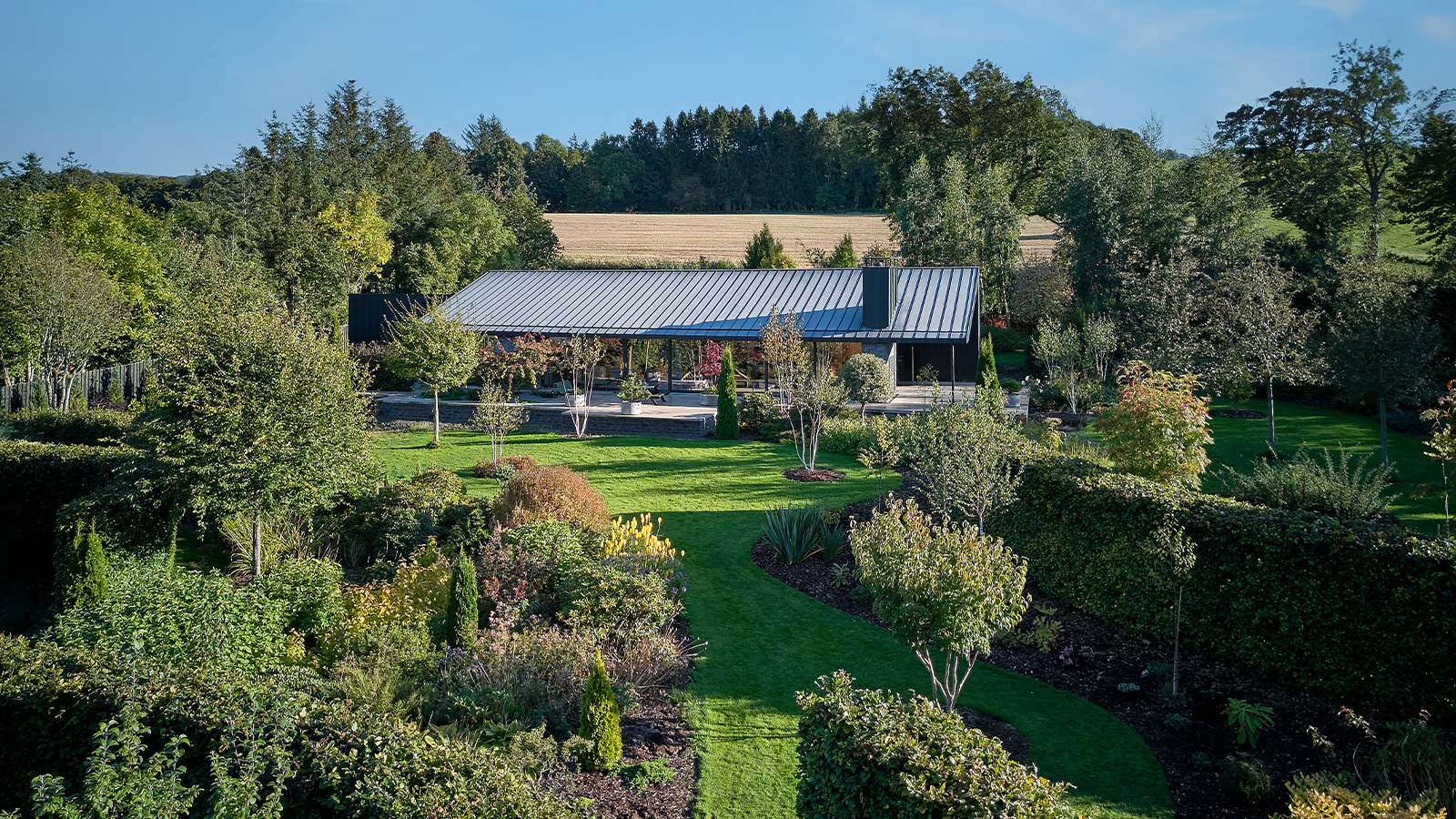 A compact Scottish home is a 'sunny place,' nestled into its thriving orchard setting
A compact Scottish home is a 'sunny place,' nestled into its thriving orchard settingGrianan (Gaelic for 'sunny place') is a single-storey Scottish home by Cameron Webster Architects set in rural Stirlingshire
-
 7 colours that will define 2026, from rich gold to glacier blue
7 colours that will define 2026, from rich gold to glacier blueThese moody hues, versatile neutrals and vivid shades will shape the new year, according to trend forecasters
-
 Step inside this resilient, river-facing cabin for a life with ‘less stuff’
Step inside this resilient, river-facing cabin for a life with ‘less stuff’A tough little cabin designed by architects Wittman Estes, with a big view of the Pacific Northwest's Wenatchee River, is the perfect cosy retreat
-
 Remembering Robert A.M. Stern, an architect who discovered possibility in the past
Remembering Robert A.M. Stern, an architect who discovered possibility in the pastIt's easy to dismiss the late architect as a traditionalist. But Stern was, in fact, a design rebel whose buildings were as distinctly grand and buttoned-up as his chalk-striped suits
-
 Own an early John Lautner, perched in LA’s Echo Park hills
Own an early John Lautner, perched in LA’s Echo Park hillsThe restored and updated Jules Salkin Residence by John Lautner is a unique piece of Californian design heritage, an early private house by the Frank Lloyd Wright acolyte that points to his future iconic status
-
 The Architecture Edit: Wallpaper’s houses of the month
The Architecture Edit: Wallpaper’s houses of the monthFrom wineries-turned-music studios to fire-resistant holiday homes, these are the properties that have most impressed the Wallpaper* editors this month
-
 The Stahl House – an icon of mid-century modernism – is for sale in Los Angeles
The Stahl House – an icon of mid-century modernism – is for sale in Los AngelesAfter 65 years in the hands of the same family, the home, also known as Case Study House #22, has been listed for $25 million
-
 Houston's Ismaili Centre is the most dazzling new building in America. Here's a look inside
Houston's Ismaili Centre is the most dazzling new building in America. Here's a look insideLondon-based architect Farshid Moussavi designed a new building open to all – and in the process, has created a gleaming new monument
-
 Frank Lloyd Wright’s Fountainhead will be opened to the public for the first time
Frank Lloyd Wright’s Fountainhead will be opened to the public for the first timeThe home, a defining example of the architect’s vision for American design, has been acquired by the Mississippi Museum of Art, which will open it to the public, giving visitors the chance to experience Frank Lloyd Wright’s genius firsthand
-
 Clad in terracotta, these new Williamsburg homes blend loft living and an organic feel
Clad in terracotta, these new Williamsburg homes blend loft living and an organic feelThe Williamsburg homes inside 103 Grand Street, designed by Brooklyn-based architects Of Possible, bring together elegant interiors and dramatic outdoor space in a slick, stacked volume